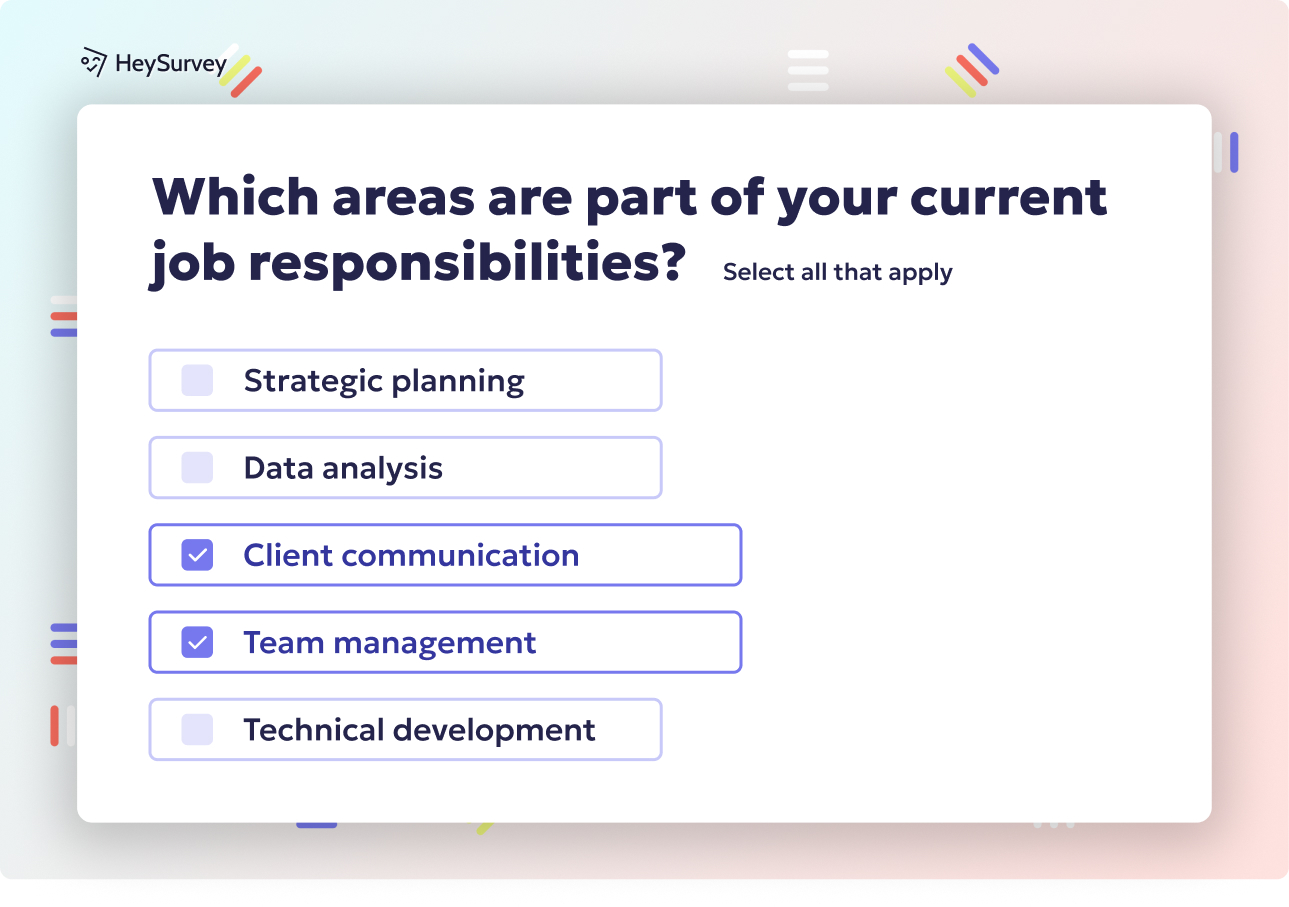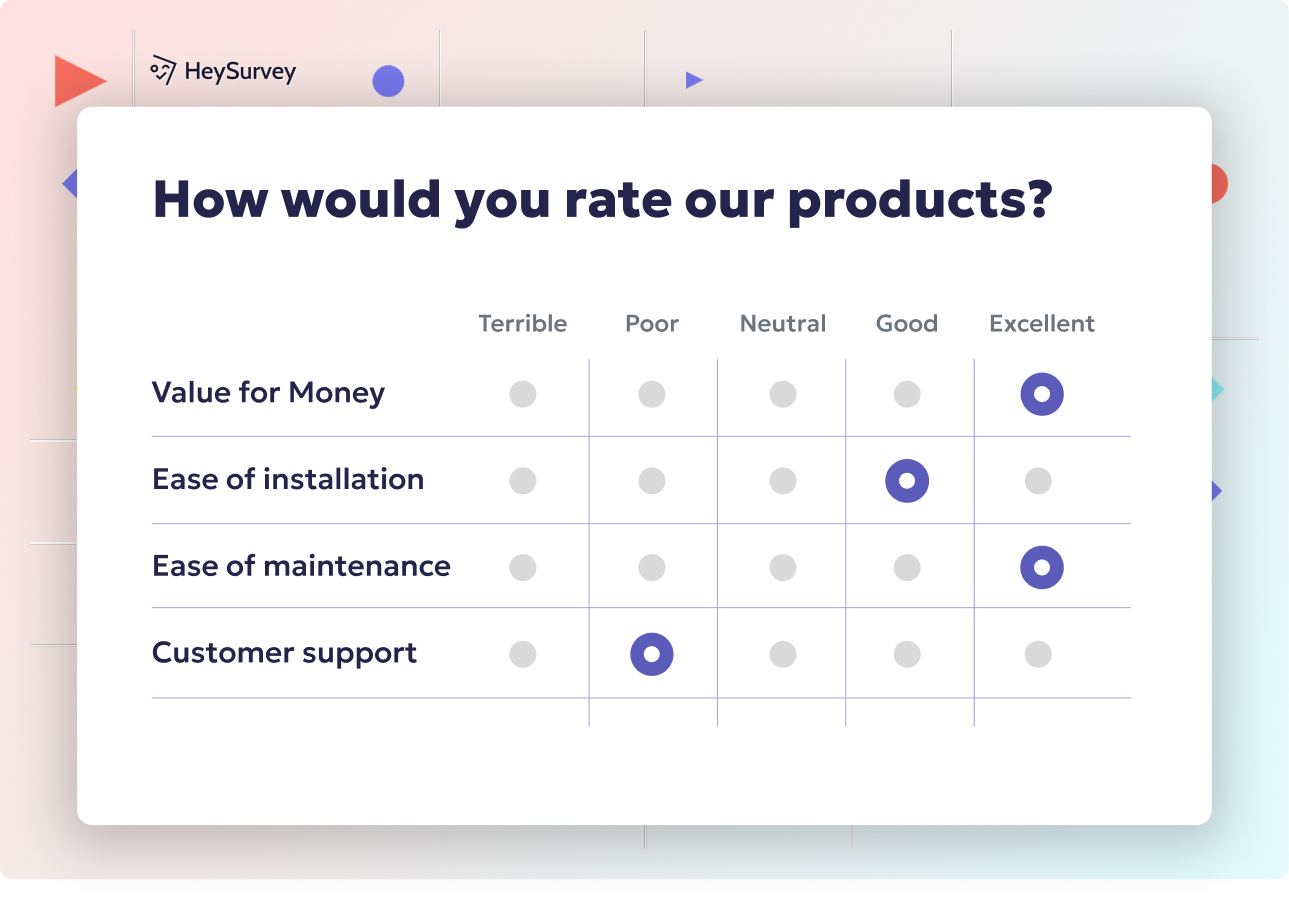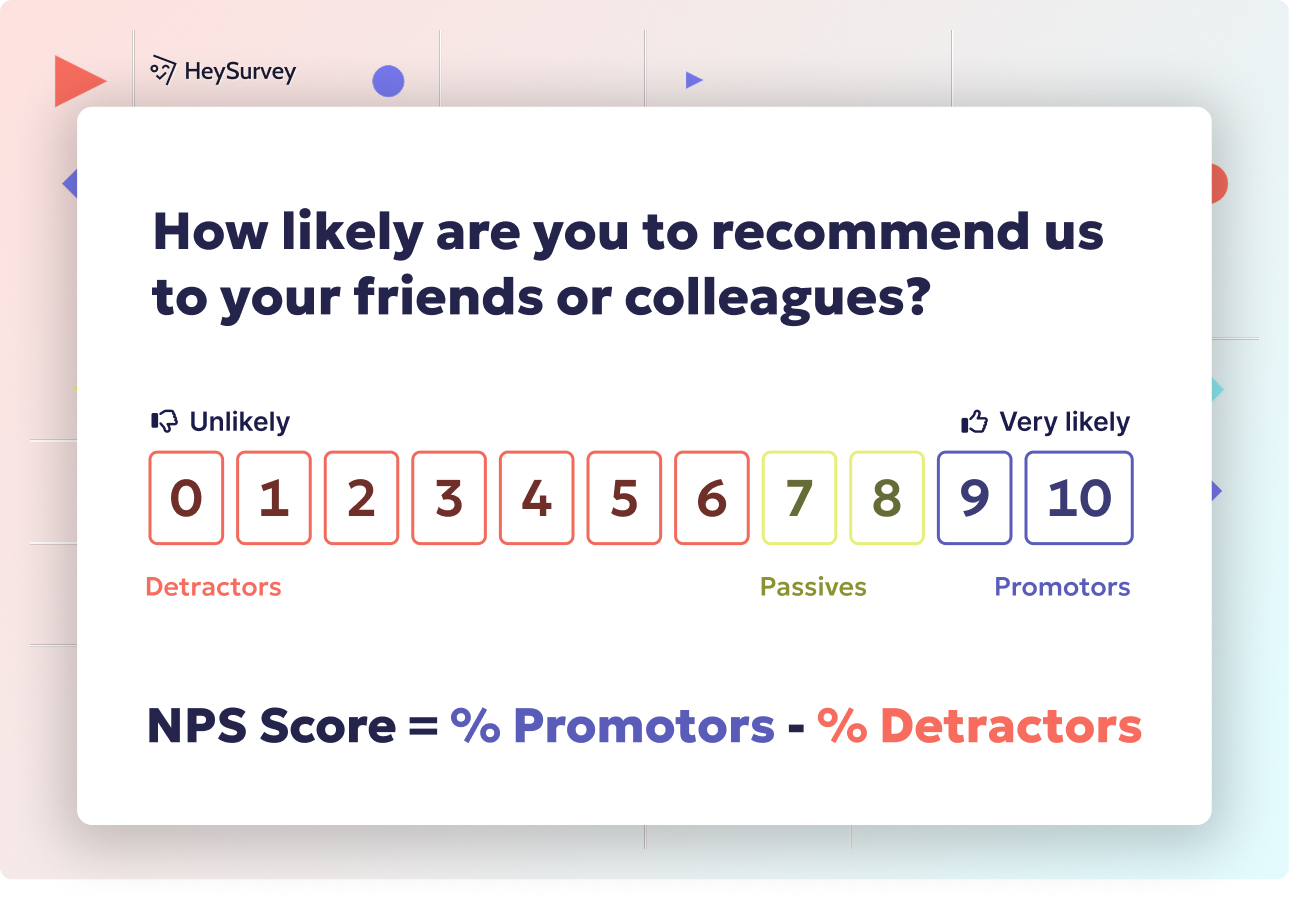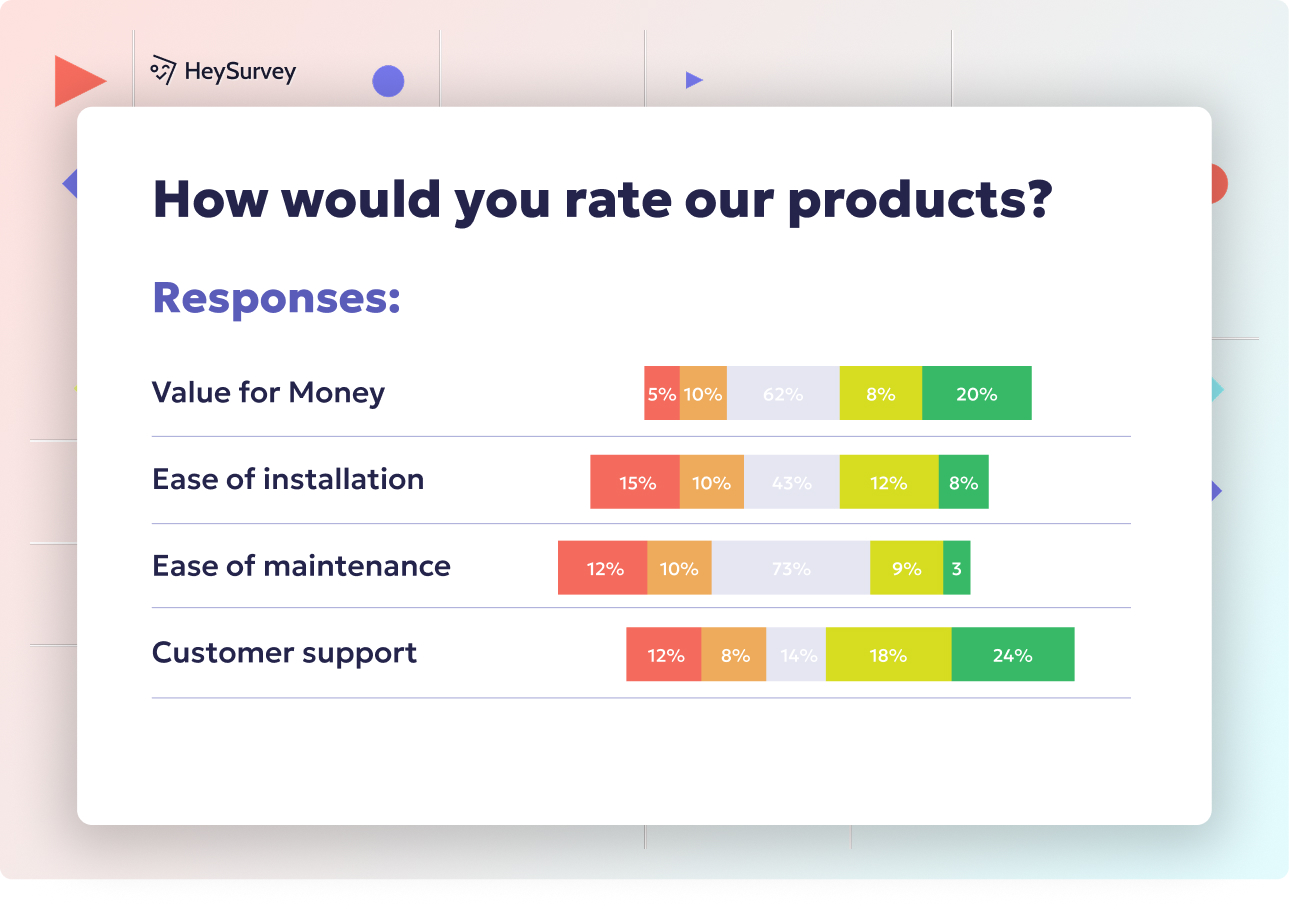31 Patient Satisfaction Survey Questions: Complete Provider Guide
Explore 25 patient satisfaction survey questions across 6 settings to boost healthcare quality, patient experience, and care outcomes effectively.
Patient satisfaction is the heartbeat of today’s healthcare system! Listening to patients not only boosts quality but directly impacts clinical outcomes, payment models like HCAHPS scores, your online ratings, and whether patients actually come back. If you’re wondering when to pop a survey into the patient journey, think big: pre-visit check-ins, point-of-care kiosks, post-visit texts, and those longer-term check-ups all have their place. We’ll walk you through every type – from in-clinic to telehealth and beyond – and share why tailored questions are your secret weapon for meaningful, actionable feedback.
In-Clinic Experience Survey
Why Use This Survey
Collecting real-time feedback right from your office or clinic helps nip problems in the bud. You get insights on the things patients notice most—like how long they waited, how friendly the front desk was, or whether the waiting room coffee was actually hot. When you know about problems quickly, you can recover service, dial up your team’s performance, and keep your patient experience sparkling.
These surveys are perfect for tracking:
- Wait times and how patients perceive them
- Staff courtesy and respect
- Cleanliness and comfort of the facilities
Getting this data means you can spot patterns (uh-oh, Dr. Jones always runs behind!) and focus on what matters most to visitors at your practice.
When to Use This Survey
The best time to capture opinions is immediately after the visit. Patients’ impressions are still fresh, so you’ll get the most honest and detailed responses. Whether you set up a quick touchscreen kiosk at checkout, ping a short SMS right after their appointment, or email a friendly survey link, strike while the experience is top of mind.
Popular distribution channels include:
- On-site kiosks for instant responses
- Automated SMS for quick, mobile-friendly feedback
- Email follow-ups later that same day
Think of this as your “doctor office satisfaction survey” or “point-of-care feedback” and use the data to drive improvements.
Sample Questions
- How satisfied were you with the length of time you waited to see the provider?
- How clearly did the medical staff explain your treatment options?
- Were the clinic facilities (waiting room, restrooms) clean and comfortable?
- How likely are you to recommend our clinic to friends or family? (0–10)
- Did you feel respected by all members of our staff today? (Yes/No, with space for comments)
Keep the language friendly, vary your question types, and make it easy for everyone—even the most hurried patients—to give you a speedy review.
Research indicates that negatively framed questions in patient satisfaction surveys yield significantly lower satisfaction scores compared to positively framed ones. (ncbi.nlm.nih.gov)

Creating your first patient satisfaction survey with HeySurvey is easier than you might think! Just follow these simple steps to get your survey live in no time.
Step 1: Create a New Survey
- Head over to HeySurvey and choose “Create Survey.”
- You can start from an empty sheet to build your customized survey or pick a pre-built template tailored for healthcare surveys to save time.
- Give your survey an internal name that helps you recognize it later (like “In-Clinic Experience Survey”).
Step 2: Add Questions
- Click the “Add Question” button to insert questions one at a time.
- Select the type that fits your needs best — Likert scales for satisfaction, NPS for recommendation likelihood, multiple choice or yes/no questions for quick answers.
- Input the question text exactly as you want it, add descriptions if needed, and decide which questions are required to ensure no critical feedback is missed.
- Don’t forget to sprinkle in open-ended questions for comments or suggestions to catch those priceless patient insights!
Step 3: Publish Survey
- Preview your survey to double-check how it looks and flows. HeySurvey lets you experience the survey exactly as your patients would.
- Once happy, hit “Publish” to make your survey live. You’ll get a sharable link to send via SMS, email, or embed on your website.
- Note: You’ll need to create a free HeySurvey account to publish and access incoming responses.
Bonus Step 1: Apply Branding
- Open the Designer Sidebar to add your clinic’s logo, customize colors, fonts, and backgrounds to match your brand identity.
- This helps your survey feel professional and trustworthy to patients completing it.
Bonus Step 2: Define Settings
- Click the Settings Panel to set start/end dates if you want the survey active for only a certain period.
- You can also limit the number of responses, set a custom redirect URL after submission, or allow patients to view aggregate results if you want to share transparency.
Bonus Step 3: Use Branching Logic
- For more personalized feedback, apply branching so survey questions adapt based on previous answers.
- For example, if a patient rates wait times poorly, you can automatically ask a follow-up question to learn more about the delay.
Now, you’re ready to collect valuable patient feedback with HeySurvey—quickly, easily, and with style. When you’re done here, click the button below to open a template and start building your perfect patient satisfaction survey!
Post-Discharge Hospital Stay Survey
Why Use This Survey
Post-discharge surveys are the gold standard for feedback on continuity of care after a hospital stay. Patients have seen everything—the food, the meds, the drama, and, yes, the paperwork. These surveys determine how well clinicians tie up loose ends and make recovery comfortable, and the results directly feed into quality-based reimbursement models (hello, HCAHPS scores!).
They measure:
- Discharge education’s clarity (no one wants discharge instructions that read like a novel)
- How well pain is managed
- Cleanliness of the environment
- Overall experience
Hospitals thrive when they know where they stand, and patient voices play a huge role in shaping care delivery.
When to Use This Survey
Timing is everything! You want honest feedback, but not before the patient’s had a chance to catch their breath. Aim to send your hospital discharge satisfaction survey 24 to 72 hours after discharge. This covers the sweet spot: the initial recovery and any “what now?” questions are still fresh, but the patient is back in their own bed.
Try these approaches:
- Personalized emails shortly after leaving
- SMS prompts for mobile convenience
- Follow-up calls if you have a high-touch approach
In other words, don’t wait until the details get fuzzy—use “inpatient feedback” to drive lasting improvements.
Sample Questions
- How well did hospital staff explain the medications you were prescribed at discharge?
- During your stay, how often was your pain well controlled?
- Were your room and bathroom kept clean?
- Did you receive clear follow-up appointment information before leaving the hospital?
- Overall, how would you rate the quality of care you received?
Make it easy for patients to tell you the good, the bad, and the unforgettable. This data is priceless for patient experience teams and quality managers.
A study found that despite 90% of patients expressing confidence in their discharge information, only 43.4% correctly recalled medication changes. (jointcommission.org)
Telehealth Visit Satisfaction Survey
Why Use This Survey
Now that patients can wear pajamas to appointments, telehealth is booming. But it’s not all sunshine and loungewear; there are real hurdles in making virtual care “click.” A telemedicine satisfaction survey helps you measure whether your platform is user-friendly, whether patients feel heard, and if the “care” part of remote care really shines.
This type of survey zooms in on:
- Ease of technology use (nobody wants to fight with logins)
- Quality of audio and video
- Time spent with providers
- Patient-provider communication
Telehealth is only as good as the comfort and confidence it inspires, so get your feedback straight from the source.
When to Use This Survey
Strike while the virtual visit is still fresh! The ideal moment is right after the call ends, when patients still remember if the doctor’s microphone was cutting out or the screen froze mid-sentence.
Set up your system to automatically trigger:
- Pop-up surveys post-session
- Instant email invites after log-off
- SMS links with a “how did we do?” nudge
Use secure, HIPAA-compliant platforms for peace of mind and encourage “virtual care feedback” for every telemedicine consultation.
Sample Questions
- How easy was it to log in and join your virtual appointment?
- Did the audio and video quality meet your needs?
- Did you feel you had enough time to discuss your concerns with the provider?
- How confident are you in the treatment plan provided during this telehealth visit?
- How likely are you to choose a telehealth visit again for similar issues?
A little feedback goes a long way toward making telemedicine as comfortable as your favorite slippers.
Outpatient Procedure & Surgical Patient Survey
Why Use This Survey
Surgical patients are a special crowd—they’ve prepared, fasted, worried, and trusted your team. An ambulatory surgery center survey hones in on what matters most before, during, and after a procedure. Ratings here can alert you to gaps in education, reveal pain points (literally!), and make sure instructions for home care are crystal-clear.
Outpatient and surgical feedback measures:
- Pre-op communication and expectations
- Immediate comfort and pain management
- Easy-to-follow post-op instructions
- Follow-up and recovery process
When you understand this feedback, you help future patients heal well and avoid complications—a win-win.
When to Use This Survey
Timing is doubly important. The best moment is 48 to 72 hours after a procedure, when pain and instructions are fresh on the mind. For long-term perspective, add a short follow-up at the two-week mark to see how recovery is progressing and catch any surprises.
Ways to deliver include:
- Secure patient portal messages
- Post-op SMS and emails
- Phone calls for complex recoveries
Keep the journey smooth by gathering meaningful “post-op patient feedback.”
Sample Questions
- How clearly did the surgical team explain what to expect before your procedure?
- How satisfied were you with pain management immediately after surgery?
- Were post-operative care instructions easy to understand?
- Did staff address your concerns or questions promptly during recovery?
- How satisfied are you with the overall outcome of your procedure?
Use these insights to put your post-op process under the microscope and celebrate exceptional care.
The CAHPS Surgical Care Survey assesses patient experiences with surgical care, including pre-operative communication, anesthesia care, and post-operative follow-up. (ahrq.gov)
Emergency Department (ED) Visit Satisfaction Survey
Why Use This Survey
The emergency department is organized chaos. Patients are anxious, the pace is brisk, and every moment counts. Capturing satisfaction here is about more than just stars and numbers—it’s your best shot at finding bottlenecks, fixing communication issues, and reducing people leaving before being seen (bummer for everyone involved!).
Your “ER satisfaction survey” pinpoints:
- Triage and check-in process satisfaction
- Wait time communication
- Pain relief and comfort during high-stress situations
- Perceptions of safety and empathy in the ED
This intel helps teams react effectively and makes the ER a safer, friendlier place for future emergencies.
When to Use This Survey
You want your feedback before memories fade or frustrations dull. Send your survey within 24 hours of discharge or transfer, and you’ll reap responses rich in detail—and, sometimes, raw emotion.
Effective channels are:
- Automated SMS while patients are still processing the experience
- Prompt follow-up emails
- Mobile optimized forms for speed
Quick, easy “emergency department patient feedback” is the gold standard for actionable data.
Sample Questions
- How satisfied were you with the triage process upon arrival?
- Did staff keep you informed about wait times?
- How well did the ED team manage your pain or discomfort?
- Did you feel safe and cared for during your stay in the ED?
- How likely are you to return to this ED if future care is needed?
Benchmark the answers, share results with your clinical teams, and set targets for lowering those dreaded LWBS rates.
Long-Term Follow-Up & Chronic Care Management Survey
Why Use This Survey
For those living with chronic conditions, one visit is just the start. This is where long-term satisfaction surveys shine brightest! These surveys help track whether care teams are supporting patients along their entire journey—not just at the office, but at home, through new symptoms, med changes, and appointments upon appointments.
They monitor:
- Patient confidence in managing their condition
- Ease of accessing ongoing resources
- Feeling heard and understood by care teams
- Cross-provider coordination
- Overall satisfaction with the extended care experience
These insights drive value-based care improvements and truly change lives over time.
When to Use This Survey
Consistency is key. Send these at intervals—3, 6, or 12 months—or after big milestone visits (like a “yay, you hit your A1C goal!”). This way, you keep a finger on the pulse of patient experience and keep people from falling through the cracks.
Distribution options include:
- Automated check-in texts or emails
- In-portal assessments during telehealth or in-person follow-ups
- Personalized phone calls for at-risk populations
Use these as your “chronic care satisfaction” or “longitudinal patient survey” toolkit.
Sample Questions
- How confident are you in managing your condition with the support provided?
- How easy is it to schedule follow-up appointments or refill prescriptions?
- Do you feel your care team listens to your concerns over time?
- How satisfied are you with the coordination between your specialists and primary provider?
- Overall, how would you rate your ongoing care experience?
Use the feedback to fine-tune care plans, boost treatment adherence, and close the loop with your most loyal patients.
Best Practices & Dos and Don’ts for Patient Satisfaction Surveys
Dos
Want survey magic? Keep it short and sweet—think 10 minutes or less, tops. Plain language wins (bye-bye, medical jargon), and anonymity boosts candor, so assure patients their privacy is priority number one. Respond to feedback quickly, especially if something goes sideways; nothing says “we care” like fixing a complaint fast.
Nail the survey experience by:
- Including a strong mix: Likert scales, Net Promoter scores, open-ended questions, to invite all types of feedback
- Designing for mobile first, so patients can answer on the go
- Setting a smart reminder cadence (but never spamming!)
- Using colorful data visualization to make feedback easier to understand for your team
Don’ts
Don’t get stuck in old survey habits. Skip complexity—no intimidating language or leading questions. Don’t sweep negative feedback under the rug or wait so long to send the survey that patients have forgotten what you’re asking about. And—seriously—never, ever mishandle data or ignore compliance basics.
Avoid these common tripwires:
- Bombarding with too many questions or irrelevant items
- Ignoring responses, especially negative ones
- Releasing PHI without safeguards
- Confusing “feedback” with “fishing for compliments”
Striking the perfect balance keeps your finger on the patient-experience pulse and builds real trust.
Conclusion: Turning Patient Feedback into Better Healthcare Outcomes
Every survey is more than a checkbox—it’s a golden ticket to better care. By listening with open ears and quick follow-up, you turn patient feedback into lasting change. Use what you’ve learned here and set up your first survey today. Your patients (and care teams) will thank you. Ready for the next step? Download our free customizable survey template or schedule a live demo to boost your patient engagement game!
Related Health Survey Surveys

30+ Health Care Satisfaction Survey Questions: Templates & Tips
Explore 30 expert health care satisfaction survey questions across six types to boost patient fee...

31 Body Image Survey Questions: Types, Usage & Best Guide
Discover 35 expert body image survey questions across 7 proven types to measure body satisfaction...

31 Essential Domestic Violence Survey Questions: Types & Uses
Explore 30+ domestic violence survey questions covering types, uses, samples, and best practices ...
